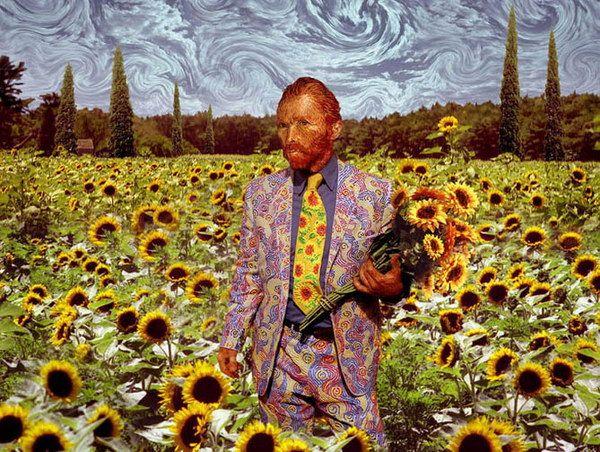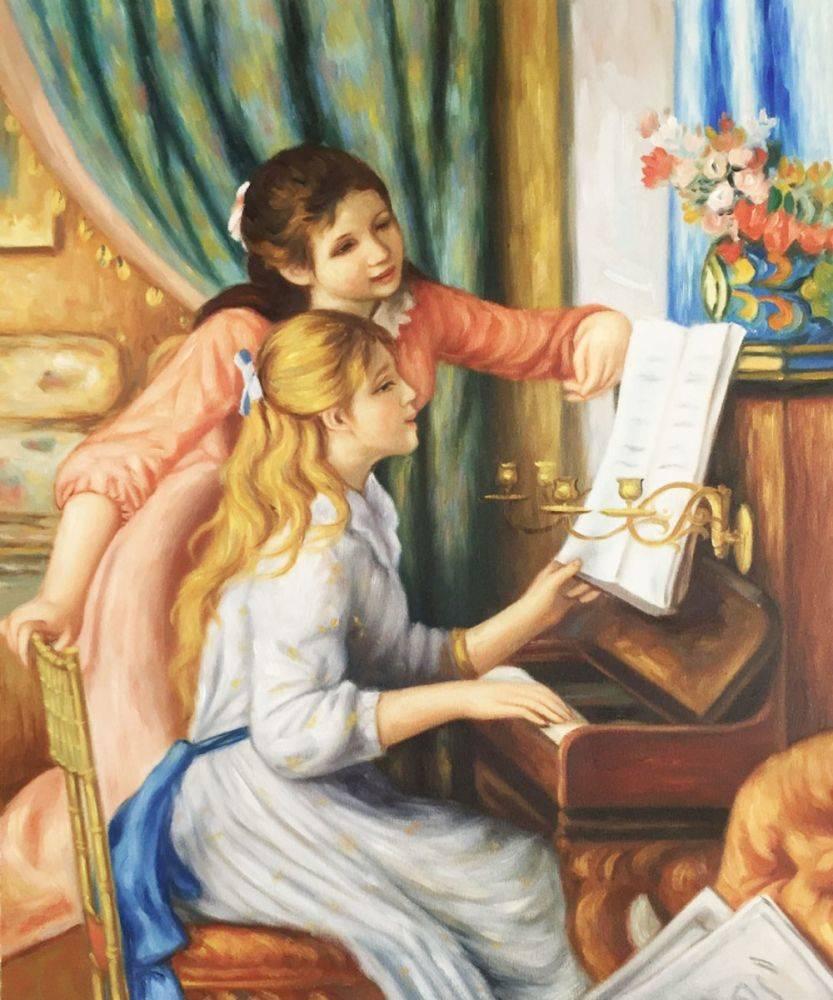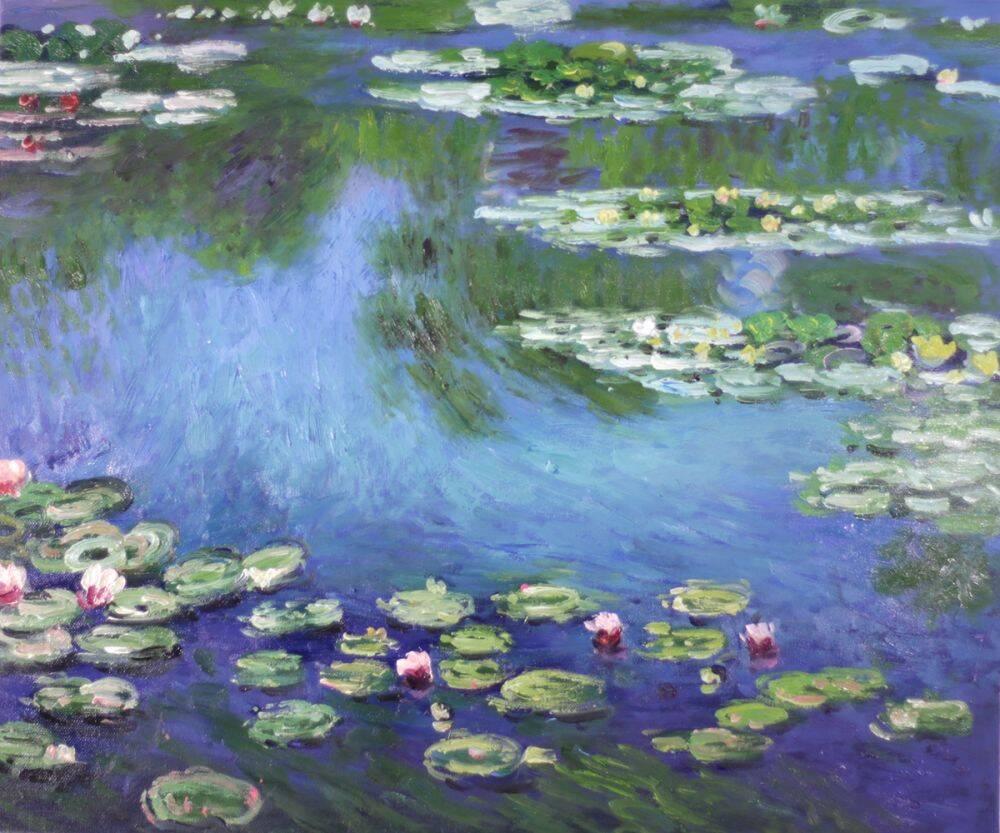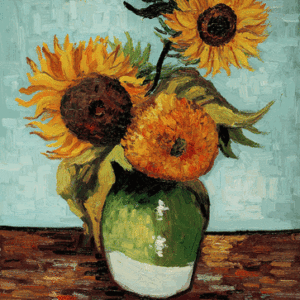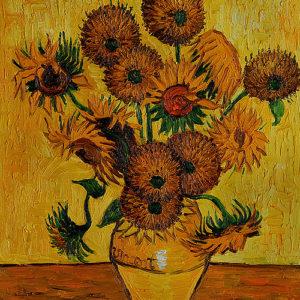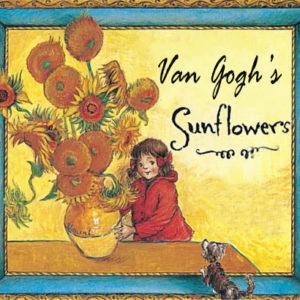Art
Van Gogh’s Obsession with Yellow Sunflowers
The sunflower paintings of Vincent van Gogh could be called “Variations on the yellow theme”. Struck by many dark obsessions caused by depression, yellow was meant to illuminate van Gogh’s days. The psychologists could say that the painter clinched to this color in order to find the light that will draw him back from the darkness in his desperate moments.
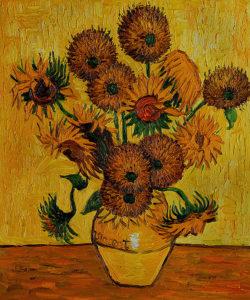 The sunflower has a psychological affect that gives an impression of perpetual happiness. Therefore, these paintings seem timeless. Yellow and blue are the colors which, it seems bring the artists childhood and Dutch memories. It is a classic contrast of colors. This contrast gives profound emotions to the art: “The dome of the sky has an extraordinary blue; the color of the sunlight is that of pale sulfur, sweet and enchanting, as the combination between the heavenly blue and the yellow in Vermeer or Delft’s paintings. I fail to resume so beautiful,” writes Vincent to his brother Theo. In another letter, he claims to have found in Provence “a different kind of yellow.” Van Gogh was influenced by the Impressionists with his warm tones and “plain air” paintings.
The sunflower has a psychological affect that gives an impression of perpetual happiness. Therefore, these paintings seem timeless. Yellow and blue are the colors which, it seems bring the artists childhood and Dutch memories. It is a classic contrast of colors. This contrast gives profound emotions to the art: “The dome of the sky has an extraordinary blue; the color of the sunlight is that of pale sulfur, sweet and enchanting, as the combination between the heavenly blue and the yellow in Vermeer or Delft’s paintings. I fail to resume so beautiful,” writes Vincent to his brother Theo. In another letter, he claims to have found in Provence “a different kind of yellow.” Van Gogh was influenced by the Impressionists with his warm tones and “plain air” paintings.
The sunflowers series has beginnings in the Paris Period, in 1887. The specifics of these paintings is given by the arrangement of the flowers. They are lying on the ground, while the second set executed a year later in Arles shows bouquets of sunflowers in a vase. The predominant color in the arlesian palette acquires a distinctive brightness and freeing itself from the subject. In the artist’s mind, both sets were linked by the name of his friend Paul Gauguin, who acquired two of the Paris versions. Paul Gauguin, who was Vincent’s guest for two months in 1888, talks about the love Van Gogh had for yellow, in the “Essay about free art,” published in 1894: “The yellow-chrome Sun burst forth from the canvas, flooding houses and flowers. Oh yes, the good Vincent, that Dutch painter, a fondness for yellow; the sun baths bathed his soul. He was a man who feared darkness. He needed heat.” Gauguin also liked Vincent’s sunflower subjects, van Gogh recalls, and remembers that, in a picture, now stored in the Van Gogh Museum in Amsterdam, he makes the portrait of his friend trying to paint the yellow corollas.
On the other hand, symbolism was quite a fashion in the young generation of artists in those days. Therefore, Vincent tried to portray the essence of the chosen object and in so, avoiding mere photographic imitation. Van Gogh’s Sunflowers paintings capture the pastoral application of color and the confused arrangement of outstretched leaves. The light-blue background in some pictures comes to emphasize the flowers. Two clearly-marked styles are seen in these paintings: a continuous composition of wavy curves and complicated short and sharp dashes. The Sunflowers series made in Arles are painted on size 30 canvas. The artist made the paintings between August 1888 and January 1889. The paintings show sunflowers in all stages of life, from full bloom to withering. Some of the versions are no longer in their original state, for example, the Tokyo version. The paining was enlarged on all sides with strips of canvas, which were added at a later time. It is said the changes were made by the first owner, Emile Schuffenecker.
“Van Gogh’s Still Life: Vase with Fifteen Sunflowers” held the record for the most expensive painting in art history in 1987. On March 31, the Japanese magnate Yasuo Goto paid for the painting $39,921,750 at Christie’s London auction. The record was broken a few months later by Alan Bond, who bought Van Gogh’s “Irises”, for $53.9 million.
